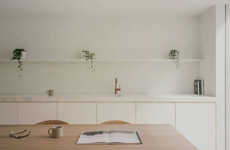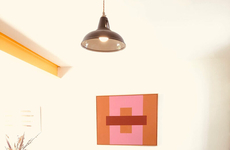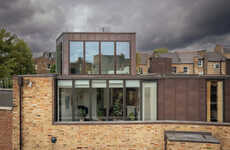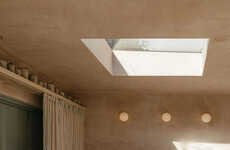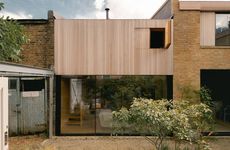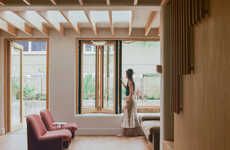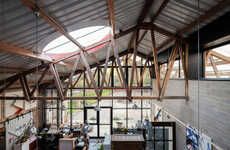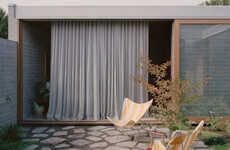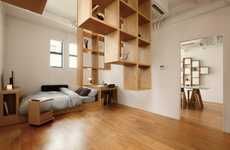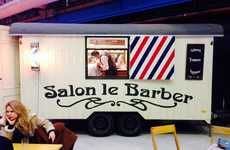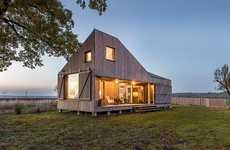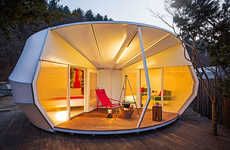
Kirkwood McCarthy has Transformed This London Atelier into a Quaint Home
Rebecca Byers — March 2, 2015 — Art & Design
References: kirkwoodmccarthy & dezeen
The Winkley Workshop in Bethnal Green, London, has been restored into a charming two-bedroom home by design studio Kirkwood McCarthy. The quaint house, owned by the firm's Fiona Kirkwood and her fiance, was a former upholsterer's workshop that dates back to the Victorian era, and was built up from the original single-storey structure to three.
The new Winkley Workshop by Kirkwood McCarthy does a lot to incorporate the courtyard and makes the most of its environment with unconventionally located windows and skylights to let in natural light and ventilation when possible.
The space does well in incorporating the original brick and timber framework of the existing property and is a contemporary update that takes the space to its full potential in terms of livability.
The new Winkley Workshop by Kirkwood McCarthy does a lot to incorporate the courtyard and makes the most of its environment with unconventionally located windows and skylights to let in natural light and ventilation when possible.
The space does well in incorporating the original brick and timber framework of the existing property and is a contemporary update that takes the space to its full potential in terms of livability.
Trend Themes
1. Restored Heritage Buildings - Restoring heritage buildings into modern living spaces presents disruptive innovation opportunities in architecture and interior design.
2. Maximizing Natural Light - Designing spaces that maximize the use of natural light and ventilation can create disruptive innovation opportunities in sustainable and energy-efficient construction.
3. Adaptive Reuse - Transforming old industrial spaces into unique and functional homes offers disruptive innovation opportunities in urban redevelopment and real estate.
Industry Implications
1. Architecture - Architects can explore disruptive innovation opportunities by transforming old buildings into modern and livable spaces.
2. Interior Design - Interior designers can find disruptive innovation opportunities by incorporating original architectural elements into contemporary living spaces.
3. Real Estate Development - Real estate developers can tap into disruptive innovation opportunities by repurposing underutilized buildings for residential use.
3.1
Score
Popularity
Activity
Freshness


